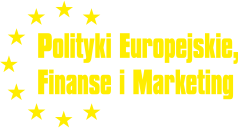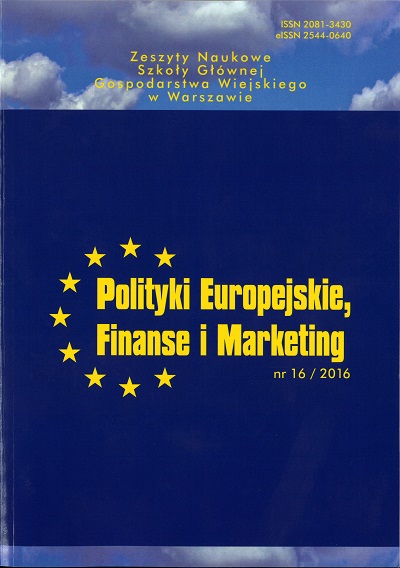Main Article Content
Article Details
Bakhtin, M.: The dialogic imagination: four essays by M. M. Bakhtin (C. Emerson & M. Holquist, Trans.).: University of Texas Press., Austin, Texas 1981;
Blank, M., & Franklin, E.: Dialogue with preschoolers: A cognitively-based system of assessment. Applied Psycholinguistics, 1(02)/2008.
Bohm, D.: Unfolding meaning: A weekend of dialogue with David Bohm., NY: Routledge New York 1985.
Bokeno, M.: Dialogue at work? What it is and isn't. Development and Learning in Organizations, 21(1)/2007. (Crossref)
Bortree, & Seltzer: Dialogic strategies and outcomes: an analysis of environmental advocacy groups' Facebook profiles. Public Relations Review, 35/2009. (Crossref)
Buber, M: I and Thou: Continuum Publishing Group Inc., 2004.
Cutlip, S. M., Center, A. H., & Broom, G. M. (2006). Effective public relations (9th ed.). Upper Saddle River, N.J.: Prentice Hall.
DiNardo, A. M.: The Internet as a crisis management tool: A critique of banking sites during Y2K. Public Relations Review, 28/2002. (Crossref)
Esrock, S. L., & Leichty, G. B.: Organization of corporate Web pages: Publics and functions. Public Relations Review, 26/2000. (Crossref)
Gadamer, H.-G.: Dialogue and dialectic: eight hermeneutical studies on Plato (P. C. Smith, Trans.)., CT: Yale University Press, New Haven 1980a.
Gordon J., Berhof S.: University websites and dialogic features for building relationships with potential students, Public Relations Review, 35/2009. (Crossref)
Greer, C. F., & Moreland, K. D.: United Airlines' and American Airlines' online crisis communication following the September 11 terrorist attacks. Public Relations Review, 29/2003. (Crossref)
Grönroos, C.: The relationship marketing process: communication, interaction, dialogue, value. The Journal of Business and Industrial Marketing, 19(2)/2004. (Crossref)
Grunig, J. E.: Organizations, environments and models. Public Relations Research and Education, 1(1)/1984.
Gustafson, R. L., & Thomsen, S. R.: Merging the teaching of public relations and advertising onto the information superhighway. Public Relations Quarterly, 41(1)/1996.
Herzberg B. & Wright, A.: The public-private dialogue handbook: a toolkit for business [sic] environment reformers, 2006, Retrieved from http://www.publicprivatedialogue.org/tools/PPDhandbookC7.pdf
Hinson, R.E., van Zyl H., Agbleze S.,: An interrogation of the dialogic potential of insurance firm websites in Ghana, Information Development 1-11/2013. (Crossref)
Ingenhoff, D., & Koelling, A. M.: The potential of Web sites as a relationship building tool for charitable fundraising NPOs. Public Relations Review 35/2009. (Crossref)
Kang S., Norton H. E.: Nonprofit organizations' use of the World Wide Web: are they sufficiently fulfilling organizational goals? Public Relations Review 30/2004. (Crossref)
Kent, M. L., & Taylor, M.: Building dialogic relationships through the World Wide Web. Public Relations Review 24(3)/1998. (Crossref)
Kent, M. L., Taylor, M., & White, W.: The relationship between Web site design and organizational responsiveness to stakeholders. Public Relations Review 29(1)/2003. (Crossref)
Lord, S. A.: Meditative dialogue: A tool for engaging students in collaborative learning processes. Journal of Family Therapy 29(4)/2007. (Crossref)
Lovejoy K., Saxton G.D.: Information, Community, and Action: How Nonprofit Organizations Use Social Media, Journal of Computer-Mediated Communication Vol. 17/2012. (Crossref)
Lovejoy K., Waters R. D., Saxton G. D.: Engaging stakeholders through Twitter: How non-profit organizations are getting more out of 140 characters or less, Public Relations Review vol. 38(2)/2012. (Crossref)
McAllister, S., & Taylor, M.: Community college Web sites as tools for fostering dialogue. Public Relations Review 33/2007. (Crossref)
Morrell, K.: Socratic dialogue as a tool for teaching business ethics. Journal of Business Ethics 53(4)/2004. (Crossref)
Naudé, A. M. E., Froneman, J. D., & Atwood, R. A.: The use of the Internet by ten South African non-governmental organizations-a public relations perspective, Public Relations Review 30/2004. (Crossref)
Park H., Reber B.H.: Relationship building and the use of Web sites: How Fortune 500 corporations use their Web sites to build relationships, Public Relations Review 34/2008. (Crossref)
Pieczka, M: Public relations as dialogic expertise? Journal of Communication Management 15(2)/2011. (Crossref)
Podnar, K., & Golob, U.: Reconstruction of public relations history through publications in Public Opinion Quarterly. Management 13(1)/2009. (Crossref)
Post, J. E., Preston, L. E., & Sauter-Sachs, S.: Redefining the corporation: Stakeholder management and organizational wealth., CA: Stanford University Press, Stanford 2002. (Crossref)
Rogers, C. R.: On becoming a person : a therapist's view of psychotherapy.: Constable & Company, London 1961.
Rybalko S., Seltzer T.: Dialogic communication in 140 characters or less: How Fortune 500 companies engage stakeholders using Twitter, Public Relations Review Vol. 36 (4)/2010. (Crossref)
Taylor, M., Kent, M. L., & White, W. J.: How activist organizations are using the Internet to build relationships, Public Relations Review,27(3)/2001. (Crossref)
Theunissen P., Wan Noordin W.: Revisiting the concept "dialogue" in public relations, Public Relations Review, 38/2012. (Crossref)
Ustawy z 24 kwietnia 2003 o działalności pożytku publicznego i o wolontariacie (Dz. U. z 2014 r., poz. 1118),
Van der Merwe, R., Pitt, L., & Abratt, R.: Stakeholder strength: PR survival strategies in the Internet age. Public Relations Quarterly 50(1)/2005.
Downloads
- Maciej Stawicki, THE DEVELOPMENT OF HOTEL BASE IN POLAND WITH THE USE OF EU FUNDS , The Scientific Journal European Policies, Finance and Marketing: No. 16(65) (2016)
You may also start an advanced similarity search for this article.
- Adam Pawlewicz, Piotr Szamrowski, The Importance of Corporate Blogs in Business-Customer Communication , The Scientific Journal European Policies, Finance and Marketing: No. 9(58) (2013)
- Marian Oliński, Piotr Szamrowski, THE USE OF TWITTER IN THE ACTIVITIES OF PUBLIC BENEFIT ORGANIZATIONS , The Scientific Journal European Policies, Finance and Marketing: No. 19(68) (2018)
All articles published in European Policies, Finance and Marketing are fully open access. In this way, the scientific research results contained in articles published in our journal are available to every reader free of charge - in accordance with the CC BY-NC license (https://creativecommons.org/licenses/by-nc/4.0/).
According to the CC BY-NC license you are free to:
- Share — copy and redistribute the material in any medium or format
- Adapt — remix, transform, and build upon the material
The licensor cannot revoke these freedoms as long as you follow the license terms.
Under the following terms:
- Attribution — You must give appropriate credit , provide a link to the license, and indicate if changes were made . You may do so in any reasonable manner, but not in any way that suggests the licensor endorses you or your use.
- NonCommercial — You may not use the material for commercial purposes .
- No additional restrictions — You may not apply legal terms or technological measures that legally restrict others from doing anything the license permits.
Source: https://creativecommons.org/licenses/by-nc/4.0/deed.en
According to that, the authors retain the copyright and full publishing rights.





